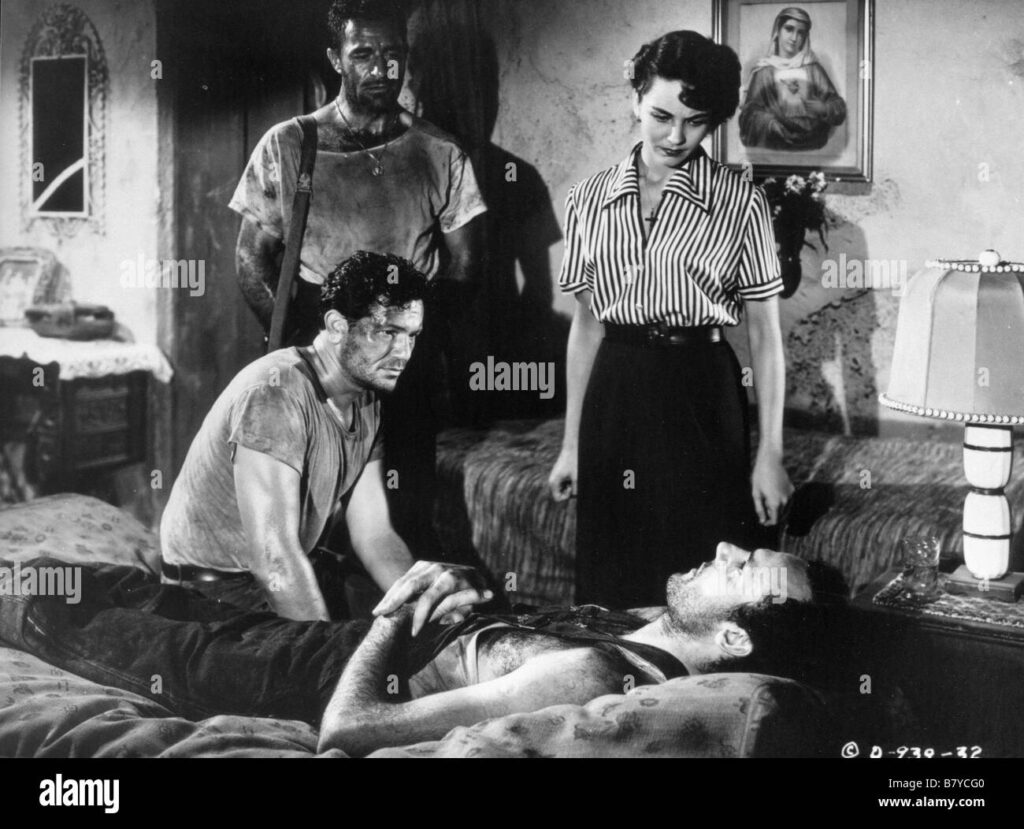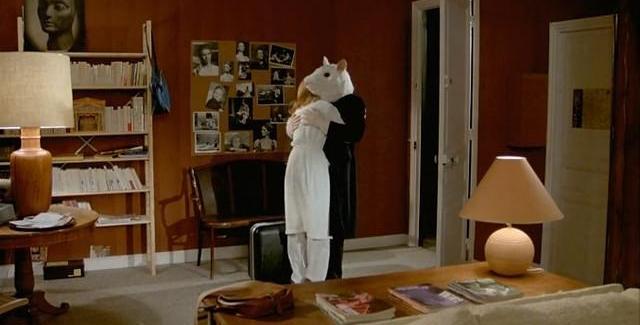Ever since the Gene Siskel Film Center decided to revoke the press pass it had assigned me for 37 years, apparently on the assumption that my money had become more important to them than any of my past or present critical support, I’ve been attending far fewer of their programs, and am currently still debating with myself whether I want to spend $13 plus travel expenses to see a new restoration of Edward Yang’s Taipei Story on New Year’s Day, especially if that entails rewarding their selfishness. But fortunately, I don’t have to contend with such mercenary/capitalist greed, at least on the same level, when I’m at home. The following cost me far less, financially and emotionally:

We Were Strangers (1949) is a film maudit in more ways than one. Look up its title in the index of the Library of America’s Agee on Film volume and you won’t find any trace. But look up Strangers — an imaginary title that must have emerged from a faulty Life edit cutting the full title from Agee’s essay about Huston and then failing to correct the abbreviated version meant to follow the full one. And then a lazy LOA editor and/or indexer perpetuated this error by pretending that Huston made a movie entitled Strangers—a Borgesian stunt that adds a new title to Huston’s filmography.
It seems that neither Agee nor Huston himself thought much of We Were Strangers. I must admit that, at least on a belated first viewing, it held me throughout, and fascinated me as a nervy if troubling defense of a small group of Cuban terrorists (including John Garfield and Jennifer Jones with a Spanish accent) willing to kill innocent civilians in order to overthrow a 1930s dictatorship. The fact that the only Latino actor in a major role is Pedro Armendáriz playing a sadistic villain may have contributed to the multiple demurrals. But as the first of many screenwriting collaborations between Huston and Peter Viertel, it works well as a thriller.
Huston’s declaration in a late interview that Reflections in a Golden Eye (1967) was his best film led me back to a movie that had mostly puzzled and irritated me without offering any dividends on two previous viewings, despite my feelings for Carson McCullers (especially her story “A Tree. A Rock. A Cloud.“) This time the movie bowled me over with its comic ironies and its stretches of giddy hyperbole about sexual neurosis among two couples and a few soldiers in a Southern military installation.
When I originally saw this in first run (in Alabama, 1967), it still had the heavy golden haze coating over everything — a rude, painterly gesture on Huston’s part. I mainly hated it for its making much of the action harder to follow, and Warners removed it from subsequent runs. (In his memoir An Open Book, Huston reports that “using every threat, contact, and influence I could muster, I got the studio to agree to make fifty prints in the amber color and release these first to theaters in major American cities.” One of those prints made it to Florence, Alabama—presumably at the request of my father when he booked it—and Manny Farber saw another, which he said had the color of “caterpillar guts”.) But practically everything in this movie alienated me back then, because I was too young to understand its characters; it mostly appeared to be crazy people doing crazy things to other crazy people. But today it can be seen more justly as Huston’s most adventurous film, finally acknowledging the perverse consequences of his hyperbolic masculinity issues in a way that parallels Hemingway’s never-completed novel The Garden of Eden. (Another interesting parallel: Otto Preminger’s let-it-all-hang-out hippie musical Skidoo, released the following year.)
For much of its running time it’s a string of kinky operatic duets between assorted misfits (i.e., everyone apart from Elizabeth Taylor, her black cook, and Brian Keith) alternating with a few strangled yet virtuoso arias from Brando, each of which contributes another layer and aspect to his character’s tortured repressions.
Two Resnais features
La Guerre est finie (1966), never one of my favorite Resnais pictures, despite its graceful cutaways to imagined glimpses, looks even weaker now that its starstruck posturing of leftist anguish seems even harder to distinguish from its sexist narcissism. (The same narcissistic mansplaining infects Resnais’ unfortunate episode in Far from Vietnam.)
But Mon oncle d’Amérique (1980) always looks better each time I return to it, especially for its innovative combination of fiction (three Intertwining French lives, each one with its own French movie star avatar) with essay film (Henri Laborit lecturing on behaviorist conditioning, Resnais offering Surrealist and philosophical illustrations with his images), allowing the two regsters to rub shoulders with one another without actually colliding. It isn’t as successful as Resnais’ magnificent first three features or his Providence or Mélo, but it further clinches his unrecognized status as one of the true experimental filmmakers, someone who reinvented himself and tried something new in every feature (unlike such masters as Stan Brakhage who gradually evolved a particular style and method and tended to stick to it).
It took a lot of courage, especially for a shy soul like Resnais who tended to be afraid of his own shadow, but his willingness to plunge into unknown territory with almost every project marked him as even more of an aesthete and aesthetic risk-taker than Godard – though also much less of an intellectual. I assume that his taste for formal abstraction as a purveyor of deep emotion is what flummoxed the American marketplace and the Pauline Kael contingent the most: his refusal to make genre films, at least as the industry defined them.[12/28/23]



